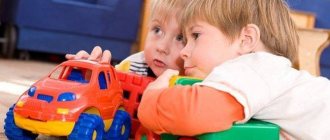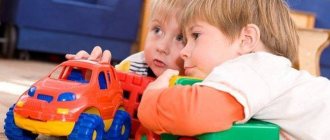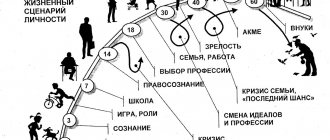Socialization factors
By scale, factors are divided (A.V. Mudrik) into:
- megafactors;
- macro factors;
- mesofactors;
- microfactors.
Megafactors
These are global factors that influence any person: space, Earth, humanity.
Space is considered as a kind of spatially ordered structure of the Universe, which includes all space and all material objects and forms of energy in it. Man is part of the Universe. Humanity has already gone beyond the boundaries of planet Earth, and, although it is only taking its first steps, it has the prospect of becoming a transformative force on the scale of the Solar System, the Galaxy and the Universe as a whole. In this regard, understanding one’s place in the universe and taking responsibility for human actions on a global scale influence the formation of the individual and his actions in society.
Planet Earth is the homeland of our civilization. The vast majority of people, with the exception of a few, spend their entire lives on Earth. In this regard, the physical and biological living conditions dictate a person’s part of his needs: the need for clothing, shelter, food supplies. And these needs already dictate the very need for social interactions, both as a method of more effective activity than individual activity, and as well as the forms of these interactions.
Society as a whole, humanity, in the words of V.I. Vernadsky, has long been a geological force transforming the appearance of the planet. In this regard, the individual person begins to be influenced by the consequences of such a transformation, primarily in the form of the technosphere. Humanity exerts a global influence on its internal processes, although this influence today is predominantly unsystematic.
Macro factors
This is a state, country, society (in the sense of a specific cultural and economically determined community).
Country as a basically geographical concept defines, to a first approximation, the territory that a person considers as “his own,” building his relations on the basis of territorial affiliation. Natural and climatic features influence human behavior both directly (through temperature, available crops for cultivation and nutrition) and indirectly (through transport accessibility, economic prospects for activity, etc.).
The state is a political concept. A person acts as an object and subject of civil rights, masters forms of legal interaction with other people. A citizen has a number of fixed obligations to the state, and vice versa, the state has a number of obligations to each citizen.
Society is a direct participant in the socialization of a person as a source of norms, rules, and guidelines. As a subject authorizing and evaluating various forms of behavior, and as an object of redistribution of resources and information regarding an individual and social groups of various sizes. Each society has a specific set of culturally and historically determined norms; in this regard, the circumstance arises that when moving to a new society, an individual may experience the need for new socialization. Society has a structure of strata (sometimes castes, as in India), belonging to which leaves its mark on the norms of behavior with others, the volume and structure of knowledge necessary for assimilation, value attitudes, etc.
Mesofactors
This is an ethnic group, a region, a type of settlement, and means of communication (including mass).
Ethnicity as a national-cultural community is the bearer of traditional values, a genetically determined appearance accepted as the norm, and, most importantly, language as the basis of thinking and the basis for interaction with culture. Here ideas about beauty, consumption standards, housing features, methods of self-realization, etc. are formed. That is, a person acquires concepts about vital needs and the nature of satisfying these needs on the basis of social interaction and acquired mental values. The spiritual makeup of an ethnic group largely determines the main status of a person before the start of professional activity.
The region of residence can be described as a “small homeland”, i.e. This is the part of the planet where the first years of a person’s life pass, which he perceives as directly his territory. It is known, for example, that people who frequently move at the age of 10-15 years do not have an image of their homeland in their psyche and do not acquire it in the future. The region of residence provides specific life examples of the interaction of large groups of people, their influence on nature, and contributes to the formation of human interaction with specific phenomena of living and inanimate nature.
The type of settlement mainly influences the formation of the nature of interaction with living and inanimate nature, and the technosphere. It influences the availability of medical, educational and other needs and related services, local mobility, and the frequency and strength of social contacts and connections. Socialization in cities takes place with a huge concentration of the population, people live literally on top of each other (multi-story buildings), the nature of social interactions is highly anonymous, contacts are frequent and massive, the requirements for compliance with hostel standards are of increased rigidity. In this regard, the scale of criminalization of society and opportunities for criminal socialization are growing. The larger the city, the more clearly these features appear. In rural areas, population density is significantly lower. The frequency of social interactions is several times lower and acquires greater value, personal significance and depth than in the city.
Mass communication media (MSC) are technical means (print, radio, cinema, television) that disseminate information to quantitatively large, dispersed audiences. They implement a mechanism for individual and group selection, evaluation and interpretation of reported information. When considering social media as a mesofactor of socialization, one must keep in mind that the direct object of influence of the flow of their messages is not an individual, but the consciousness and behavior of large social groups, i.e. mass consciousness and behavior.
Microfactors of socialization include school, family, peer group, etc.
During training, the student becomes familiar with various facets of the culture accumulated by humanity, gaining knowledge about the outside world. And a huge layer - the inner world of a person - remains virtually outside the boundaries of school curricula.
Modern school teaches us to exist in the world of knowledge, skills, abilities, and not to live among people. Interaction with wildlife, especially in urban schools, is developing poorly.
The parental family is crucial in the formation of the emotional world, self-awareness and moral foundations of the individual in the first years of life. If this is not done or done poorly, it is extremely difficult to make up for the loss. Later, especially in adolescence, parental attention noticeably weakens, giving way to other factors - school, peers, etc.
The need to communicate with peers exists at any age. Already a six-month-old child responds with crying to the crying of his peer. At one and a half years old, children can smile at each other and exchange toys. For older preschoolers, communication is simply necessary. A child deprived of such communication loses in his communicative development.
Although children learn language mainly from adults, some intuitive and communicative abilities are formed only in communication with peers.
stages of socialization and their factors
If we consider socialization as a continuous process of adaptation of a person to society, then several stages can be distinguished depending on the uniqueness of social conditions. This classification of stages of socialization was born in Soviet social psychology, which put the socio-economic aspect in first place.
Depending on the social role of a person and his place in social relations, three stages are distinguished.
- The pre-labor stage covers the entire period of growing up before the start of work and is divided into the primary and educational stages. During the pre-labor stage, basic norms of behavior are learned, and the main socializing factor is educational influence.
- Labor stage. During this period, all the abilities of the individual are revealed, and its development occurs against the background of interaction with other elements of society. This is a period of active development of social roles and formation of social status. The main socializing factor is the desire for professional growth. And the main institution of socialization is the work collective, the system of social relations.
- The post-labor stage begins with a person’s retirement. It manifests itself in the restructuring of the system of social relations and the loss by the individual of a number of his social functions. The main factor of this stage is the change in a person’s social position and the restructuring of his activities. A person has to learn to exist in new conditions and look for new ways of self-expression and personal development. Not everyone succeeds in this, so the fact of losing their social significance is experienced quite hard.
This classification of stages of socialization is not supported by all psychologists; to many it seems artificial. The third stage is the most criticized, because in adulthood a person should not lose value for society, but rather the opposite. After all, he has something that younger representatives of society do not have - invaluable experience - both professional and social.
Mechanisms of socialization
The mechanisms of socialization include: socio-psychological and socio-pedagogical.
The first group includes : imprinting, copying, reflection, existence.
Imprinting is the creation of attachments to what is seen for the first time; in the future, a person experiences the joy of recognition and emotional attachment. Copying behavior is adopting behavioral norms directly from the people around you. Reflection is the creation of a system of behavior based on internal logical reasoning. Existence is the acquisition of skills, including language, under the influence of the immediate environment.
The second group includes : traditional, institutional, interpersonal, stylized.
In the traditional mechanism, the individual’s environment does not make any specific efforts for socialization and socialization occurs spontaneously. Institutional is socialization in kindergartens, schools and other public institutions of socialization. The interpersonal mechanism works in conditions of emotional closeness, when an individual’s behavior is influenced by an emotionally significant subject and this influence is purposeful. The stylized mechanism is the influence of the subculture in which the individual is included.
Bibliography:
1. Andreeva G.M. Social psychology: Textbook, 2003.
2. Socialization of the individual in society [Electronic resource]. / Access mode: https://www.grandars.ru/college/sociologiya/socializaciya-lichnosti.html
3. Stages and mechanisms of socialization [Electronic resource]. / Access mode: https://www.grandars.ru/college/sociologiya/mehanizmy-socializacii.html
4.Structure of personality orientation [Electronic resource]. / Access mode: https://studopedia.net/10_49037_struktura-napravlennosti-lichnosti.html
5. Socialization of the individual. Stages of personality socialization [Electronic resource]. / Access mode: https://www.edu-psycho.ru/socializaciya-lichnosti.html
Attention!
If you need help writing a paper, we recommend turning to professionals. More than 70,000 authors are ready to help you right now. Free adjustments and improvements. Find out the cost of your work
Free estimate
0
Size: 31.28K
Downloads: 107
02.04.15 at 17:58 Author:semina1996
Liked? Click on the button below. It's not difficult for you
, and we
are pleased
).
To download test papers for free at maximum speed, register or log in to the site.
Important! All submitted Tests for free downloading are intended for drawing up a plan or basis for your own scientific works.
Friends! You have a unique opportunity to help students just like you! If our site helped you find the job you need, then you certainly understand how the job you add can make the work of others easier.
Add a job
If the Test work, in your opinion, is of poor quality, or you have already seen this work, please let us know.
see also
- speech influence, psycholinguistics of speech influence,
- psychology of persuasion,
- direct impact factors,
- psychological impact,
- indirect impact factors,
Unfortunately, it is not easy to provide all the knowledge about socialization in one article. But I tried. If you show interest in revealing the details, I will definitely write a sequel! I hope that now you understand what socialization is, the stages of socialization, the impact on personality, types of socialization, stages of socialization and why all this is needed, and if you don’t understand, or have any comments, then don’t hesitate to write or ask in the comments, I will be happy to answer. In order to gain a deeper understanding, I strongly recommend studying all the information from the Social Psychology category
Definition of socialization
Before discussing this topic, it is necessary to understand what socialization as such is.
Psychological science says that
socialization is the process of an individual entering a social system, mastering its norms, rules of behavior, values, knowledge and skills, and psychological attitudes.
Another, “unofficial” definition says that socialization is what allows a person to live in harmony with the world around him. How is this harmony achieved?
Man is the only creature who, let’s say, is not born by himself. Any animal at birth belongs to a certain species - the same one to which its parents belonged. And only a person, in order to obtain the characteristics inherent to his species, is obliged to undergo a long and complex process of socialization, individual forms of which occur throughout his entire life. In fact, if a newborn is left in the forest and there he randomly survives, then he will not learn to speak, or build, or even hunt. Certain forms of learning, of course, exist in many animals, but they take place only for a short time; an animal that has not undergone “socialization” still has a great chance of surviving and producing offspring, since the basic skills are embedded in its instincts. Long and complex socialization is observed only in higher primates, which proves that this phenomenon did not arise suddenly, but was inherited from our animal ancestors and evolved over thousands of years.








